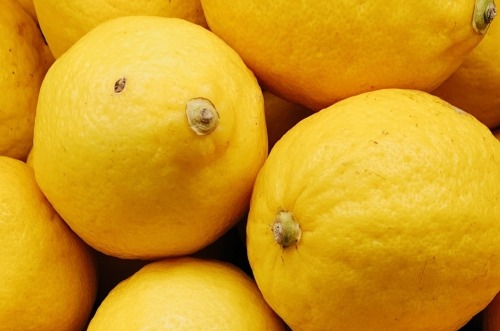W50: Lemon and Lime Weekly Report

Turkey
Controls on Pesticides Increase for Turkish Grapefruit and Lemons (Dec 14)
The European Commission has decided to increase the frequency of identity and physical checks to be carried out on such consignments entering the EU by increasing the control of pesticides used on imported Turkish lemons and grapefruit. The measure will come into effect at the beginning of January for six months. The European Commission justified the decision taken due to the seriousness of the situation in this country. Three out of ten trucks of Turkish lemons and grapefruit entering the European Union will undergo strict border controls, including pesticide testing. This is an important decision to defend the interests of European consumers.
Brazil
High Temperatures Benefit the Flow of Citrus Including Lime (Dec 16)
For Tahiti acid lime, supply continues to increase despite the rains this week have eased availability (since they hampered the progress of the harvest), prices have dropped: this week's average was USD 3.80/cx of 27kg (BRL 19.63/cx of 27kg), harvested, down 19.81% compared to W49.
Chile
Chilean Lemon Crop Estimated to Be 30% Lower (Dec 15)
In 2021/22, the citrus crop decreased due to winter frosts in the regions of Valparaíso, Metropolitana, and O'Higgins. FAS Santiago estimates that the lemon crop will drop by 30% to 140K tons in 2021/22 and increase again to 200K tons in 2022/23, assuming normal yields. Lemon acreage has increased in all Chilean growing areas over the past three seasons. Citrus became a viable alternative to other crops, such as avocado due to its high selling price and low water requirements. Chile grows lemons in the summer months between December 2022 and March 2023 for the domestic market and in the winter months between June and September 2023 for the export market.
Europe
Tahiti Lime Prices in Europe Fell 30% In W49 Due to Slow Sales and Low Demand (Dec 12)
In W49, the Tahiti lime market in Europe appears to have come to a complete standstill. Because sales have been slow, importers have begun to accelerate the price drop. In two weeks, Tahiti limes' price dropped approximately 30% from USD 8.43-10.54/4.5kg to USD 5.27-7.38/4.5kg box in W49. The reason for the price drop is due to numerous factors, including the presence of cheaper fruit from other regions, Brazil exporting more limes to Europe, and old stocks lagging because many buyers had to use up their stocks purchased at high prices first. In addition, W49 has experienced religious holidays in many European countries, which have caused a halt in the purchase. Given that the winter holidays will shortly start in Europe and that there will be less demand for fresh fruit, this issue does not appear to have a short-term solution.
Tajikistan and Uzbekistan
Lemon Crisis in Tajikistan and Uzbekistan, Local Lemon Is Not in Demand, and Imports Are Growing (Dec 12)
The prices for lemons in Tajikistan and Uzbekistan have fallen to record lows, and prices for these citrus fruits continue to fall. The retail price of lemons in Tajikistan has already dropped to the equivalent of USD 0.50/kg, which has never happened before. Lemon prices in Tajikistan have dropped below USD 1/kg for the first time in living memory, according to the Food and Agriculture Organization (FAO). The situation is slightly better in neighboring Uzbekistan, where prices are also dropping. FAO: "We do not consider the pandemic year 2020 with an abnormally high demand for lemon". Central Asia has suboptimal conditions for growing lemons. While in Turkey, as well as in the southern European Union countries, lemons are grown outdoors, in Uzbekistan and Tajikistan, they have to be grown indoors. Also, the "Meyer lemon" is less transportable compared to those lemons that are mainly exported by the European Union countries. Consumers in most countries are not familiar with the Meyer lemon, so it will be extremely difficult to quickly increase the export of this type of lemon. Meyer lemons are still preferred by local consumers, but their prices are likely to fall, making them less economically viable to grow.



